2017 800cc Trail King Comparison
2017 Arctic Cat ZR 8000 RR vs. Polaris 800 Rush XCR vs. Ski-Doo MXZ XRS 800
High performance trail riders want two things: power and handling. They prefer it in a lightweight, race-inspired chassis with top of the line shock packages. And they’ll probably go for the two-stroke versions of high performance. Of course, the appearance of that new 998cc turbocharged Yamaha triple in a Cat chassis may cause them to pause and rethink their two-stroke leanings. Still, for the moment, the two-stroke king of the trails in model year 2017 remains one of these three 800cc trail scorchers: Arctic Cat ZR 8000 RR ES 129; Ski-Doo MXZ X-RS; or Polaris 800 Rush XCR.
All three offer each manufacturers’ highest output 800cc two-stroke twin placed in a race-bred chassis equipped with premium suspension and shock packages. If you add in the cost of an optional electric start to Polaris’ XCR to make it comparable to the Cat and Ski-Doo that come with that feature standard, all three sleds would be priced within dollars of each other. With the points of comparison very similar, the choice of which sled to buy most likely comes down to brand preference.
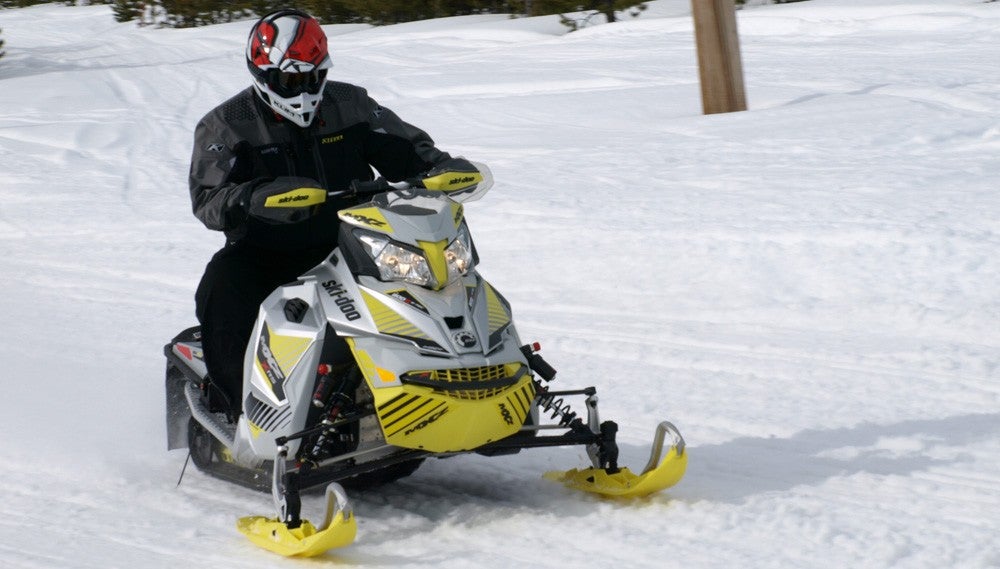
Handsome styling and innovative features have been a hallmark of top of the line Ski-Doo snowmobiles like the high performance MXZ RS.
Under the hood there are real differences, sort of. The Ski-Doo is a Rotax design with an innovative and unique direct fuel injection system. This “clean” two-stroke engineering results in top performance with improved fuel and oil efficiency. The Polaris-engineered and built Cleanfire 800 high output twin is that company’s latest design and features serious engineering to maximize its performance. The Arctic Cat counters with a Suzuki-built twin that has been a top performer on and off trail as well as in deep powder for a good number of snow seasons. All of these powerplants offer a claimed 160-plus horsepower in sleds designed for high speed performance. Independent dyno testing of select 2010 models revealed that a 2010 Cat Suzuki twin pulled more than 163 horsepower, slightly more than the 2010 Rotax’ 162 horses. Since that dyno pull, Polaris has introduced a new Cleanfire 800cc twin with power said to be in the same neighborhood.
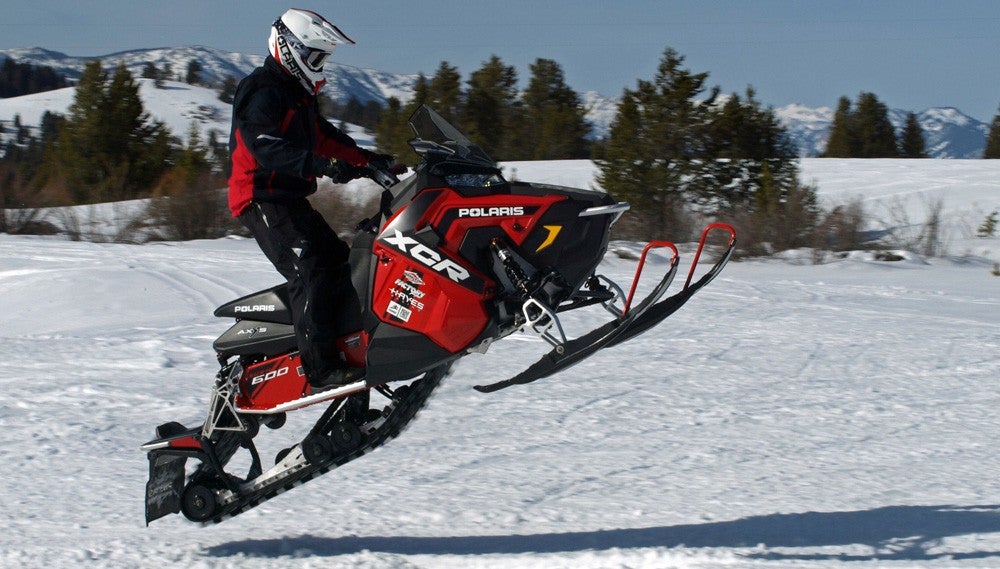
Airborne all the way! Whether powered by the Cleanfire 800 or the sibling 600 twin, the 2017 Polaris XCR was designed for big drops and tight trails.
While all three models base their chassis design off race sleds, they each have unique character. The Ski-Doo REV-XS RS platform was the top of the line ride-forward chassis before the all-new 850 sleds, which brings an entirely new fourth generation REV platform and larger displacement 850cc twin to performance riders. Nonetheless, the REV-XS RS design carried Ski-Doo’s pioneering REV thinking on to the race track. The REV concept totally recast the way we ride. It offers vastly improved rider ergonomics and an ability to react more quickly to trail conditions. In short, the REV concept totally changed everything for us and we all benefited.
The Polaris XCR offers its own rider forward design that Polaris refers to as “rider balanced positioning.” Polaris feels that its AXYS chassis offers more to performance riders as you can slip forward to minimize ski lift or slide back for ski off the ground acceleration. Polaris has worked diligently to counter the REV and made much of centralizing vehicle mass and getting the rider in the best riding position for any trail need.
Arctic Cat’s Slide-Action control rear suspension and tall spindle ARS front end combine in the ZR chassis to provide exceptional all-around handling. From the outside looking in, the Cat’s rear set up seems extremely conventional compared to Ski-Doo’s rMotion or Polaris’ Pro-XC designs. Those have visual clues to let you know they are special.
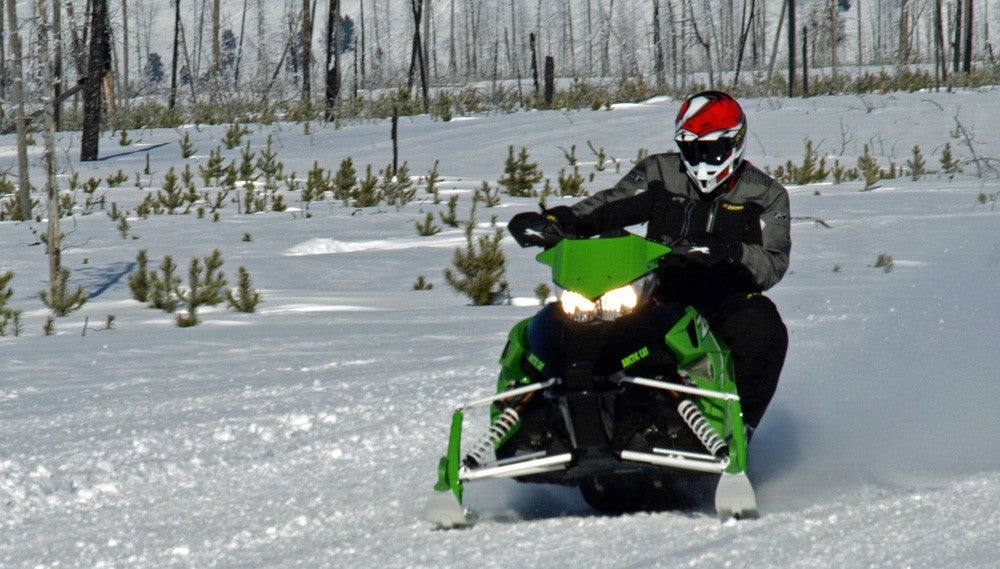
The combination of Cat’s ARS front suspension and rear Slide-Action results in a sled that corners flat and handles predictably.
The Ski-Doo’s external runningboard-mounted adjusters are more than styling, they let you quickly tune the ride and suspension set up with a twist of the dial. Even the optional quick adjust Pilot TS skis with their dial-adjust runner settings let technology stand out to impress. Make no mistake, these features work very well, and with the upgrade to RAS2 for the front suspension, the MXZ X-RS is not only impressive technically, but extremely tunable.
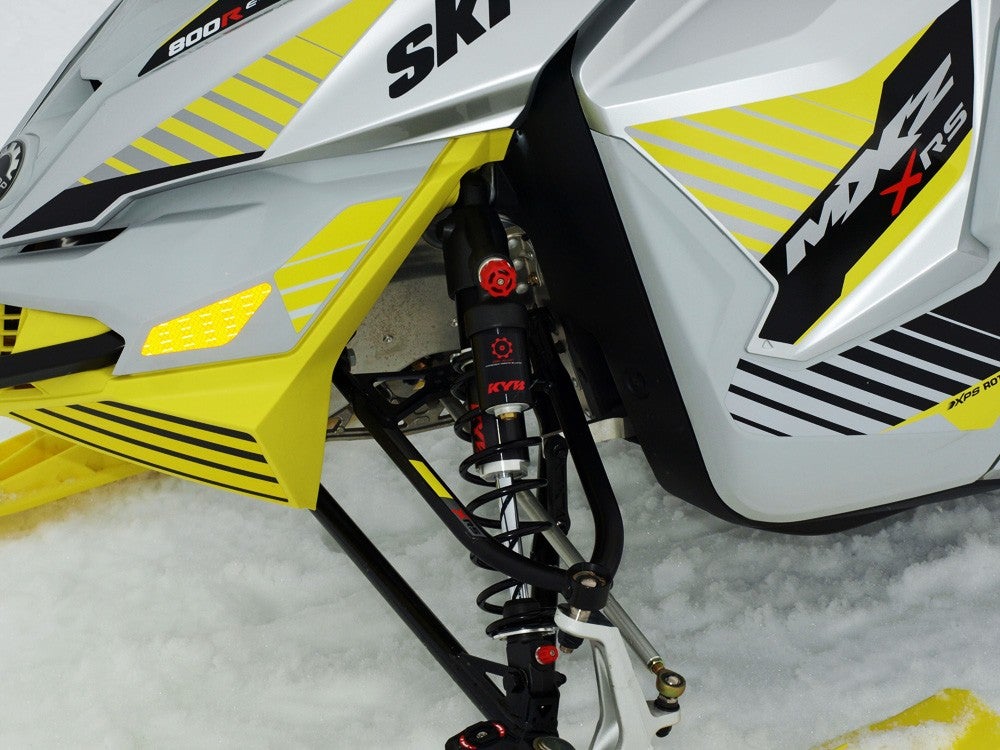
Make no mistake, with the upgrade to RAS2 for the front suspension, the MXZ X-RS is not only impressive technically, but extremely tunable.
Likewise, Polaris’ XCR borrows the best of both “Pro” worlds – Pro-S and Pro-X. The AXYS chassis was made to maximize the capabilities of the Pro-S style AXYS front suspension and Pro-XC rear suspension. The sway bar for the XCR comes off the Pro-X, although the sled’s ride height approximates the lower to the snow character of the Pro-S. At the rear you’ll find a high performance version of the Pro-XC. These suspensions use exclusive to Polaris Walker Evans shocks that have extreme versatility and are easy to set up.
By contrast, Arctic Cat’s Slide-Action design seems quite plain, having neither runningboard-mounted adjusters or external rear suspension shock. But the 8000 RR is a true race replica that includes the latest version of Fox QS-3 easy adjust shocks front and rear. These gas shocks are competition calibrated, but still offer three distinct levels of adjustability. The Slide-Action rear design allows for a bit of slippage front to rear that results in providing excellent control on or off throttle. Hit the throttle hard for a bit of light ski lift or tap the brakes entering a turn to get the skis to lay into the snow for maximum bite. Nothing fancy to adjust here; just a suspension combination that has proven its ability to go hard all day long.
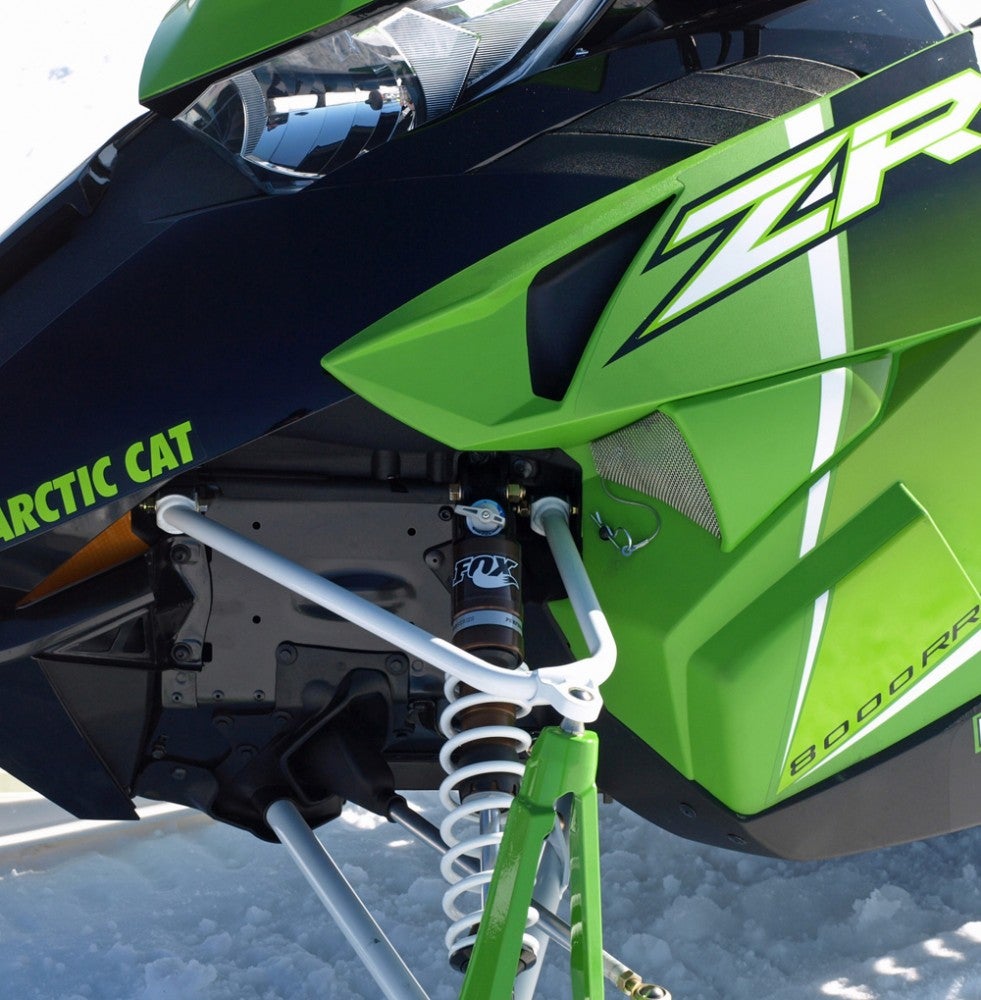
Cat’s 8000 RR is a true race replica that includes the latest version of Fox Shocks’ QS-3 easy adjust shocks front and rear.
Overall, the Cat would appear to be the sled that’s easiest to set up and be set for a day of hard charging. The Ski-Doo and Polaris both offer more degrees of tuning. From a statistical viewpoint, the Cat overs more front suspension travel at 10 inches. The Ski-Doo is next at 9.5 inches and the XCR trails at 9.3 inches. At the rear the Cat and Polaris are in a virtual stalemate – Cat at 13.5 inches and Polaris at 13.6 inches. The Ski-Doo relies more on its shocks as it offers only 10.7 inches of maximum travel distance. This does confirm our test riding seat-of-the-pants sense that the RR felt smoother over rough trails and satisfies our belief that the best use of a shock is to engage most if not all of its stroke for the best ride. This may be debatable as the Cat’s QS3 shocks have only three setting choices versus the many clicks and turns afforded to the Ski-Doo rMotion or XCR’s Pro-XC.
Which of these sleds would we buy? Frankly we’d tend to hold off on all but the Polaris and here’s why. We kind of figure that the Cat 8000 RR may be second choice for serious performance riders who prefer all-out power. Along with its new-for-2017 turbocharged Thundercat, Cat offered a limited edition turbo-engined RR. Its “official” 180-plus claimed horsepower surpasses the Suzuki twin, which must be nearing the end of its life cycle at Cat, what with Cat’s Yamaha connection and long-standing rumors of a Cat-built 800-something two-stroke to replace it. Even if the four-stroke triple is heavier, the turbo engine has to get the power to weight down into the 8000 RR range. With the turbo 9000 RR option, we suspect some 8000 RR buyers will go that direction.
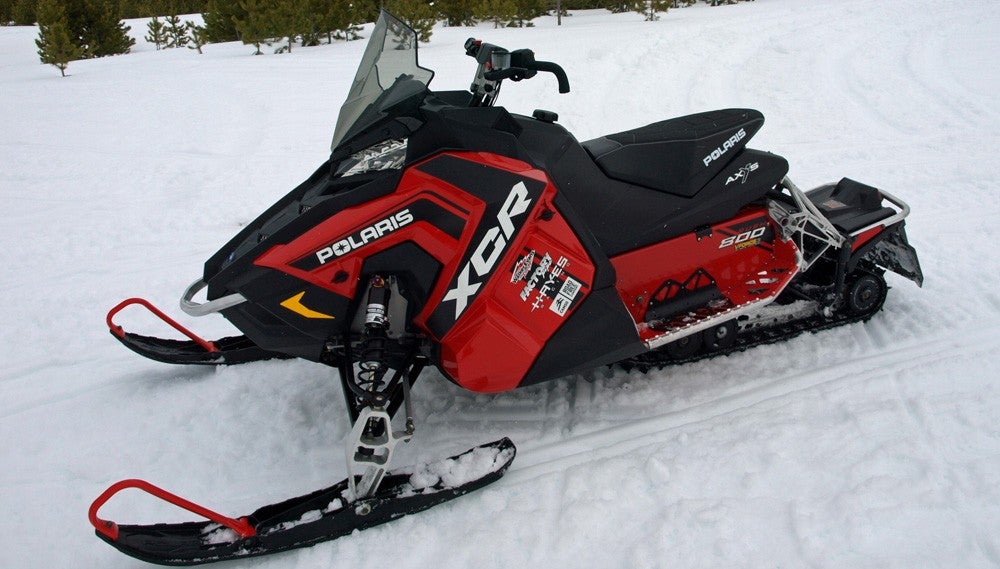
Polaris’ XCR AXYS chassis was made to maximize the capabilities of the AXYS front suspension and Pro-XC rear suspension. It uses a Pro-X sway bar but approximates the lower to the snow ride height character of the Pro-S.
As for the Ski-Doo MXZ X-RS 800, we expect that a similar package will be part of a future MXZ X 850 highest performance trail package built around the fourth generation REV platform and next generation ETEC twin. Anticipation of that handling and power would have us wait for model year 2018. Don’t get us wrong, the MXZ X-RS 800 works very well, but we have to believe that the new MXZ 850 pieces would greatly add to such a sled’s on trail performance. The engine would be stronger. The chassis response would be better, too. The current model is good; we suspect a future 850 inspired X-RS would be better.
As for the Polaris XCR, we don’t foresee big changes as this sled reflects “newness” from Polaris and satisfies the big bump, hard core trail charger as it is. Of the three 2017 models, we feel this is a very good all-around runner and in the hands of a truly competent performance rider can be quite spectacular. It has strong power, is well balanced, sits well and has been designed to be exactly what you’d buy it for – serious trail scorching. It’s also a very strong off trail banger. But that can be said about the others as well. After all, that is why you’d consider one of these top of the line trail kings.
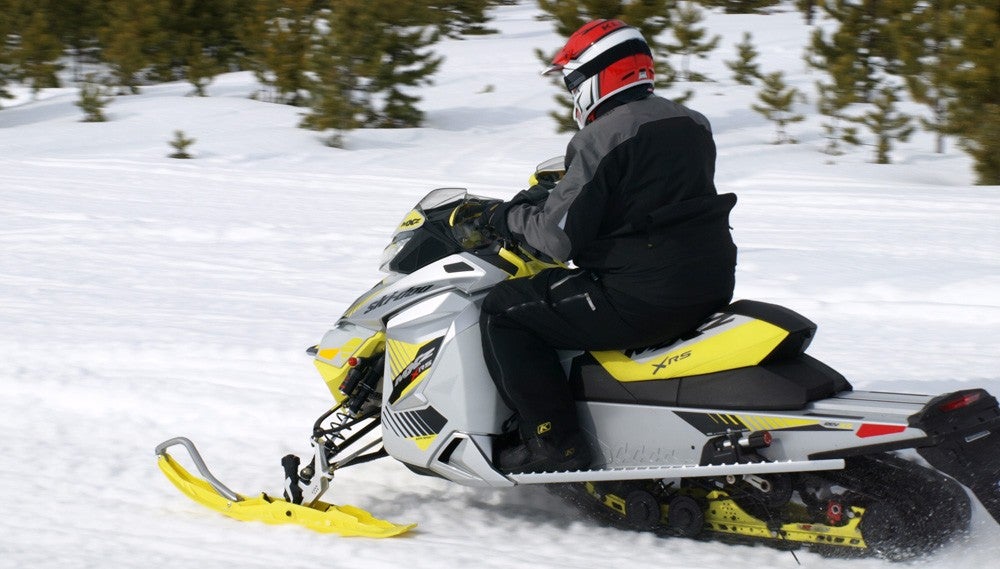
The Ski-Doo’s external runningboard-mounted adjusters are more than styling, they let you quickly tune the ride and suspension set up with a twist of the dial.
Make no mistake, as far as we’re concerned, there is no wrong answer here. They all give you bragging rights to some degree or another. We like some things a bit better on one sled and other things better on another, but overall the ultimate choice most likely will come down to brand preference.
| 2017 Arctic Cat ZR 8000 RR 129 | 2017 Polaris 800 Rush XCR | 2017 Ski-Doo MXZ X-RS 800 | |
| Engine | Suzuki 794cc twin cylinder 2-stroke; liquid-cooled; electronic fuel injection; two-into-one exhaust; CD ignition | Polaris 795cc twin cylinder 2-stroke; liquid-cooled; Polaris Cleanfire electronic fuel injection; two-into-one exhaust; CD ignition | Rotax 799.5cc twin cylinder 2-stroke; liquid-cooled; electronic direct fuel injection; two-into-one exhaust; CD ignition |
| Horsepower | 160+ (Estimated) | 160+ (Estimated) | 160+ (Estimated) |
| Drive | Team Rapid Response drive with Team Rapid Reaction BOSS driven clutch | Polaris P85 drive with Team LWT driven clutch | Ski-Doo TRA-VII drive with QRS; 3800 rpm engagement |
| Front Suspension | Arctic Race Suspension dual A-arm with Fox 1.5 Zero QS3R Kashima coating shocks; 10-inches of travel; Pro-Cross 6 skis | AXYS dual A-arm with Walker Evans Hi-Lo speed compression adjustable piggyback competition-type shocks; 9.3-inches of travel; Pro Steer skis | Ski-Doo dual A-arm RAS 2 with KYB Pro 40 easy adjust shocks; 9.5-in travel |
| Rear Suspension | Arctic Cat Slide-Action parallel rail; Fox 1.5 Zero QS3R Kashima front arm shock; Fox 2.0 Zero QS3R Kashima rear arm shock; 13.5-inches of travel | Pro-XC parallel rail slide suspension with external Walker Evans Hi-Lo speed compression adjustable piggyback competition-type shock on rear; 13.6-inches of travel | Ski-Doo rMotion with KYB Pro 40 easy adjust shocks; 10.7-in travel (Quick Adjust rMotion system optional) |
| Length | 121.0 in | 114.0 in | 118.5 in |
| Height | 45.75 in | 42.5 in | 42.4 in |
| Width | 47.75 | 47.0 in | 47.9 in |
| Ski Stance | Adjustable 42 to 43 | 42.5 in | 42.4 in |
| Track | 15 x 129 x 1.25 Ripsaw | 15 x 121 x 1.352 Cobra | 15 x 129 x 1.25 Ripsaw (Optional Ice Ripper XT) |
| Weight | NA | 448 lbs | 493 lbs |
| Brake | Hydraulic race radial disc | Polaris AXYS radial race-type disc system | Brembo race-type disc system |
| Features | STANDARD: electric start; electronic reverse; high performance seat; adjustable curved handlebar; 5.5-inch riser; multifunction gauge/display; 5.5-in race-height windscreen OPTION: storage; windshields | STANDARD: Pro-Steer skis; electronic reverse; AXYS performance seat; one-piece hooked handlebar with Pro-X riser; multifunction gauge/display OPTION: electric start, storage; security system | STANDARD: REV-XS RS chassis; Pilot 5.7 skis; Rev-XP X seat with storage; straight aluminum handlebar with J-hook ends; 5.3-inch riser block; electric start; electronic reverse; multifunction gauge/display; 6-inch windshield OPTION: storage |
| Fuel Capacity | 11.7 US Gal (91 octane) | 12.0 US Gal | 10.6 US Gal (91 octane) |
| MSRP | US$14,099 / CAD$16,599 | US$12,299 / CAD$14,999 | US$14,099 |



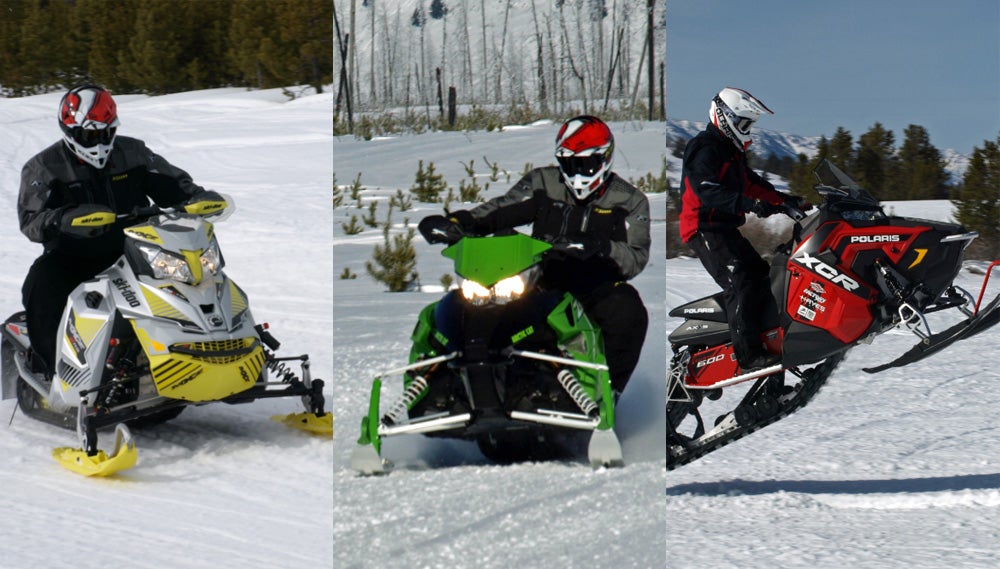
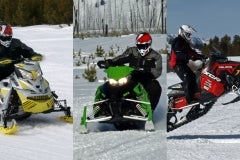
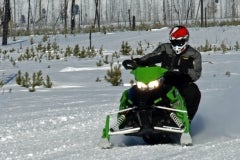
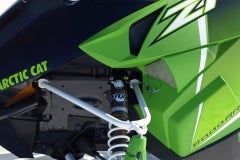
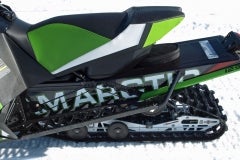
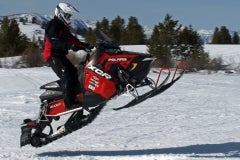
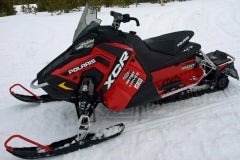
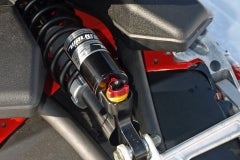
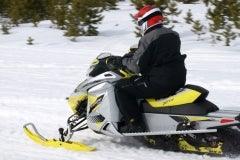
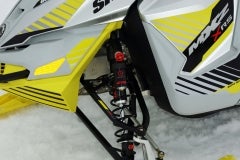
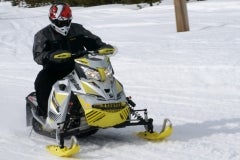
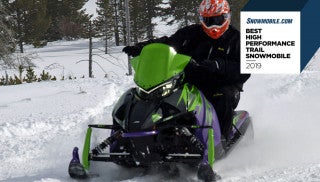
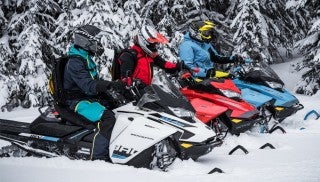
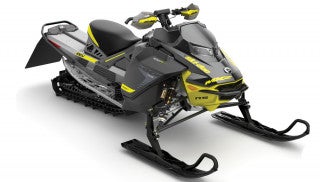


 Your Privacy Choices
Your Privacy Choices